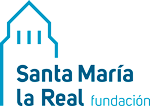Indulge in all that the Iberian wine regions have to offer…
Thanks to a patchwork of diverse terroir, climates, grape varietals, and production techniques, all of which change widely across its landscape, there isn’t a square to be found in Iberia that doesn’t produce excellent wine. In fact, it wouldn’t be remiss to say that the region has no parallel in the world, and, more often than not, offers world-class quality at incredibly affordable prices.
Some production areas may sound familiar, but there are more than you can probably name. Highlights include:
In Spain:
- Southern Andalusia: Huelva County, the magnificent Jerez-Xérès-Sherry, Málaga, Sanlúcar de Barrameda, Montilla-Moriles and Sierras de Málaga.
- In the old Kingdoms of Castile and León: Arlanza, Arribes, Bierzo, Cigales, Ribera del Duero, Rueda, Tierra de León, Tierra del Vino de Zamora and Toro.
- Near the Iberian Northwestern tip, in Galicia: Monterrei, Rías Baixas, Ribeira Sacra, Ribeiro, Valdeorras, etc.
- Some areas span various regions: The sparkling Cava, and Jumilla, or the highly renowned Rioja (one of a few Qualified Designation of Origin [QDO], together with Priorato QDO).
- All in all, there are approximately 70 Designations of Origin (DO). And besides these, there are also some special ‘table wines’ that are not to be missed. They are excellent, innovative and niche in their own right and they prefer to remain hands-free from DO regulations.
In Portugal:
- Dão.
- Douro Valley.
- Vinho Verde
- And Porto, to name but a few.
One region is often host to an array of different wine varietals. Many are the offspring of varietals that are found all over the world, but, without exception, they all have their own Iberian specialty, with a privileged few even offering a bouquet of unique sensory gifts that really set them apart.
Combining a visit to a winery with a culinary experience and overnight accommodation is something we can include in your tour. As far as sophisticated lodging goes, Viabo has connections with some spectacular locations in the luxury bracket which are particularly memorable to visit because of their age, concept, design, architecture and even the art on display within their walls.
We can facilitate anything from wine-tasting sessions and meeting the owners to talking to expert technicians and advisory and quality control center officials. Our wine tasting experiences really are for everyone. If you plunge into our garden of Bacchus as a rookie, you will forever remember your Iberian wine introductions, and if you are a connoisseur, we guarantee your tasting experiences will be unique, rich and immensely rewarding.
DO-Q Rioja (it is a Qualified Denomination of Origin)
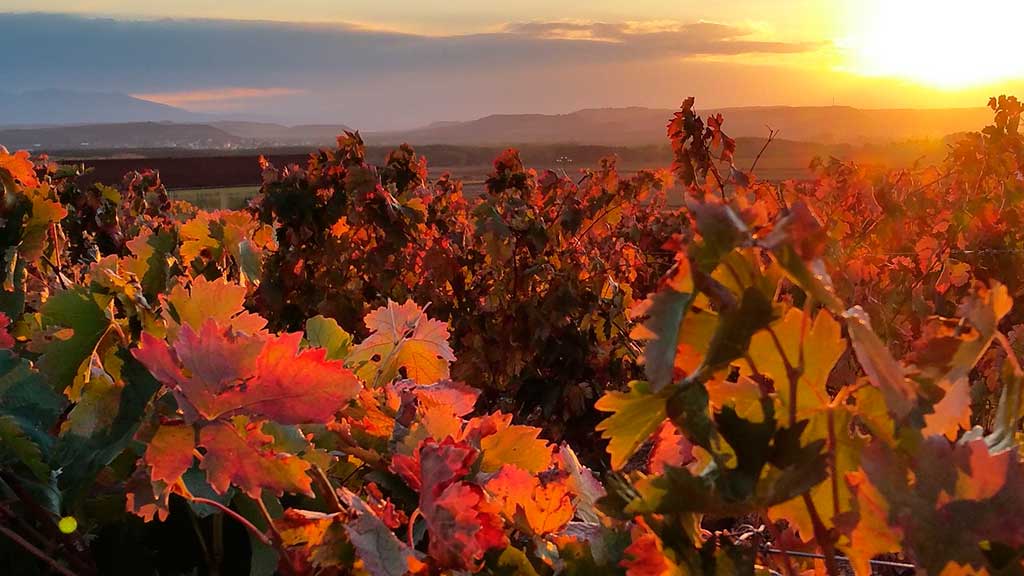
The Denominación de Origen Calificada Rioja is Spain’s leading Designation of Origin (D.O.), with more than 600 wineries, 14 800 grape growers and the largest number of barrels in the world. Rioja wines are present in 130 different countries.
Interestingly enough, Rioja wines are protected by the oldest D.O. in Spain. The modern Rioja was born in the late 19thcentury, establishing a clear link between the name of a product and the place where it was made. This sparked growing concerns among Rioja’s grape growers and winemakers about protecting its identity against counterfeiters, which ultimately led to the official recognition of the Rioja D.O. in June 1925.
The Rioja wine region is located in the north of Spain, on both sides of the River Ebro, and is divided into three large zones: Rioja Alta, Rioja Alavesa and Rioja Oriental (called Rioja Baja until 2018). A hundred kilometers separate the westernmost town, Haro, from the easternmost, Alfaro. With more than 65 000 hectares of vineyards, each town and terroir has its own personality, making Rioja a unique land.
The whole area benefits from the confluence of two widely opposing climates (Atlantic and Mediterranean) and mild temperatures – ideal conditions for grape growing. Not only that, but Rioja soil is also highly suitable for quality viticulture: slightly alkaline and boasting a good balance of sand, silt and clay, with moderate water availability during the summer.
Today, Rioja is one of the D.O.s that offers the most guarantees regarding the quality and authenticity of its wines, and one of the few that require that all of its wines be bottled at source. The Rioja Control Board’s effective enforcement of some of the strictest regulations in any wine region in the world offers great assurance regarding the quality and authenticity of its wines, giving consumers great confidence in the product and securing the D.O.’s world-leading position in the market.
Source:
https://www.riojawine.com/es-en/
Laguardia is the one of the most important (and beautiful) towns in the southern province of Álava, in the north of Spain
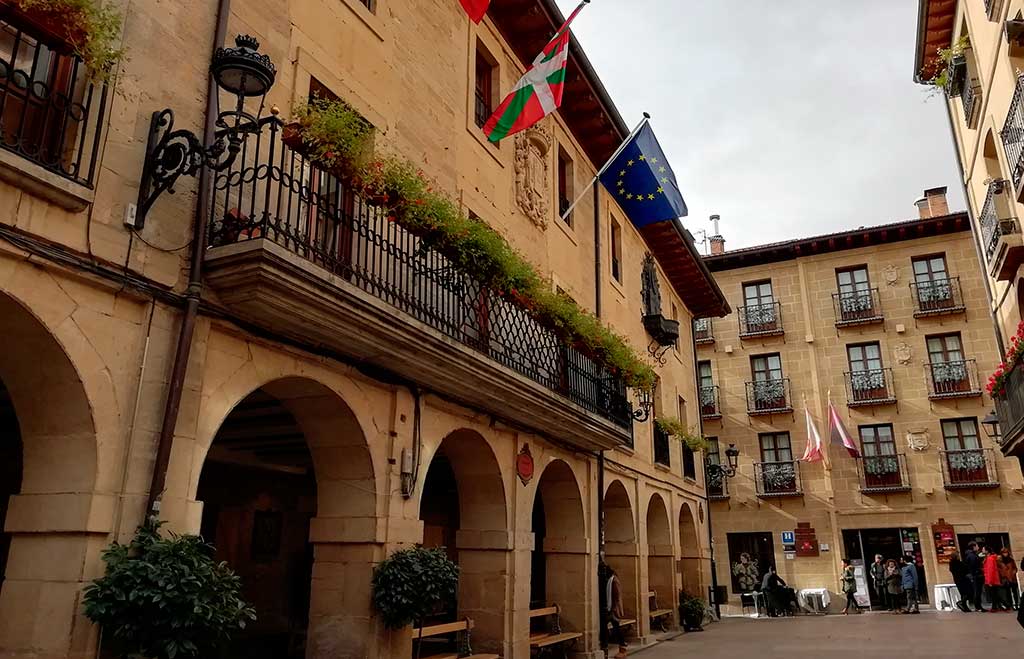
The region is famous all around the world for its top-quality wines, and because it was the birthplace of fabulist Samaniego.
The Medieval walled town of Laguardia (which is also the capital of the Rioja Alavesa region in the Basque Autonomous Community) was founded in the 10th century as a defense for the Kingdom of Navarre. To this day its medieval layout has remained almost intact and travelers love exploring the streets of Laguardia for the fact that they are full of splendid Medieval, Renaissance, Baroque and Neoclassical buildings. Among them is the 14thcentury Casa de la Primicia, the oldest civil building in the town.
Thanks to a perfect climate and being located right in the Rioja wine country, Laguardia is the perfect spot from which to explore the many wineries in the region. Some of the wines available to taste are Tempranillo and Mazuelo-based reds from la Rioja, Garnacha-based rosé wines from neighboring Navarra and Verdejo-based white wines from the up-and-coming wine region of Rueda (in Castile-Leon). Add to this the fact that Laguardia also has an abundant availability of superb dining experiences and you have a destination that is not easily forgotten.
Sources:
https://tourism.euskadi.eus/en/top10/towns/laguardia/aa30-12376/en/
https://www.spain.info/en/destination/laguardia/
https://www.cellartours.com/spain/spanish-cities/laguardia
The Marqués de Riscal Winery is located in the village of Elciego, within the Rioja Alavesa sub-area.
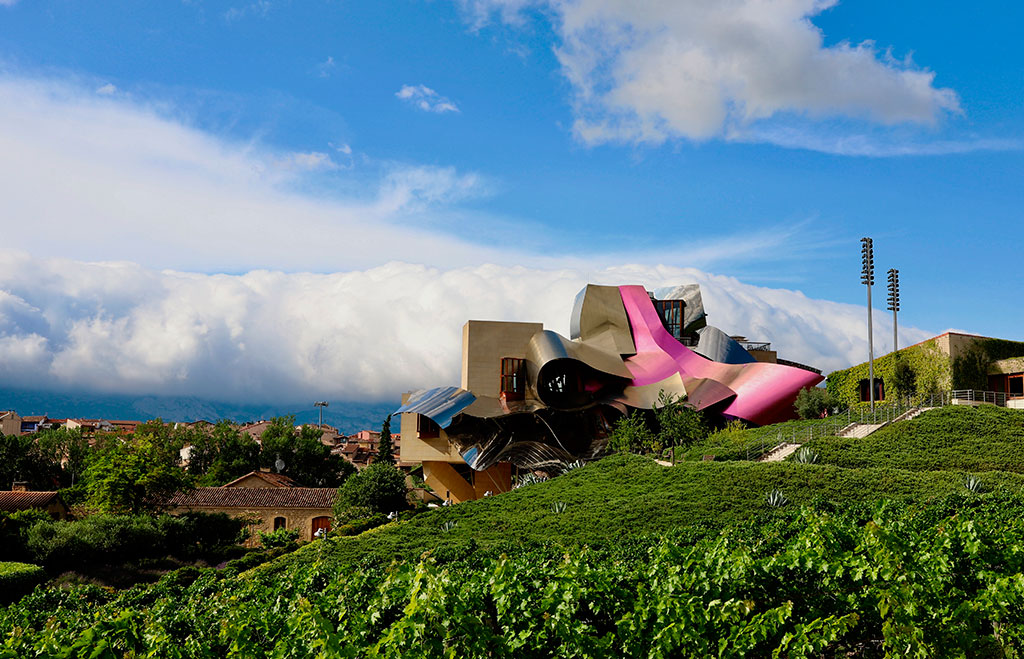
Today, a century and a half after it was founded, the winery spans an impressive 540 hectares of vineyards and controls another 900 hectares to produce more than six million bottles a year.
Wine connoisseurs visiting the property will fall in love with its historical cellar (the “Botellería Histórica”, aka “The Cathedral”) which stores bottles from every vintage since the first harvest in 1862.
Some years back, the winery expanded its offering and created the Marqués de Riscal City of Wine. This ‘city’ includes the winery, cellar buildings, a luxury hotel (designed by architect Frank Gehry), two restaurants (including one with a Michelin star), a spa, a convention center, and a wine shop.
Travelers visiting the Marqués de Riscal Winery will learn all about the winemaking process and indulge in some spectacular wine tasting. The winery’s renowned Marqués de Riscal Reserva wine is considered by many to be the perfect reference of what a Rioja Reserva should be. And that’s not to mention the winery’s flagship wine, the Barón de Chirel Reserva, which has been a pioneer in the modernisation of Rioja since it was first launched in the 1986 vintage.
The Marqués de Riscal Winery is, understandably, one of the most visited wineries in the world – it’s definitely a must-see for any wine lover’s bucket list.
Sources:
https://tourism.euskadi.eus/en/restaurants/bodegas-marques-de-riscal-winery-rioja-alavesa-wine/aa30-12375/en/
https://www.marquesderiscal.com
https://www.spanishwinelover.com/6-winerie-marques-de-riscal
https://www.greatwinecapitals.com/best-of/bilbao-rioja/marques-de-riscal-city-wine
The story of the Marqués de Murrieta Winery is inextricably intertwined with the history of Rioja wine.
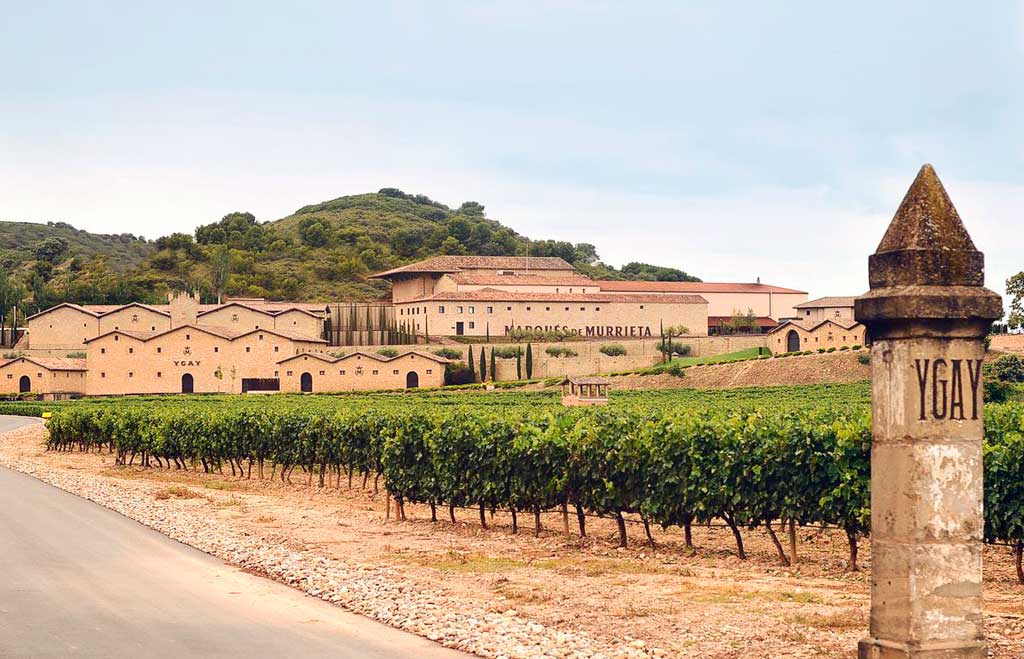
The winery’s founder, the Marqués de Murrieta, imported production techniques into Spain from Bordeaux. In 1852 he produced his first wine in Logroño, moving into the Ygay Estate in Rioja in the late 1870s. The estate is home to Ygay Castle. It’s the headquarters of the Marqués de Murrieta winery and is surrounded by 300 hectares of vineyards.
In 1983 Vicente Cebrián Sagarriga, 10th Count of Creixell, took over the project. He modernized the winery and, with his entrepreneurial vocation, he continued the legacy of Marqués de Murrieta. After his death his eldest son, Vicente D. Cebrián-Sagarriga, current Count of Creixell, assumed the management of the winery, together with his sister, Cristina. They embarked on meticulous restoration work on Ygay Castle in 2007 and only finished in 2014.
Today travelers can enjoy marvelous guided tours of the estate, beginning in the vineyard, continuing through various renovated century-old areas, and culminating in the winery’s tasting room.
Recognized as one of Europe’s most iconic century-old industrial buildings, Ygay Castle accommodates the whole of Marqués de Murrieta’s winemaking history – a history which laid the foundations of the D.O.Ca. Rioja Designation of Origin. Inside the castle you can visit the old production cellar and the cask ageing rooms, and also peruse the collection of wines (ranging from 1852 to the present) and historic Marqués de Murrieta labels and documents along the way.
Sources:
https://www.marquesdemurrieta.com/bodegas-rioja/en/ygay-estate-rioja/
https://www.spanishwinelover.com/56-winerie-marques-de-murrieta
Image courtesy of Marques de Murrieta States and Wines.
La Rioja Alta is an historic winery located in the Barrio de la Estación area in Haro.
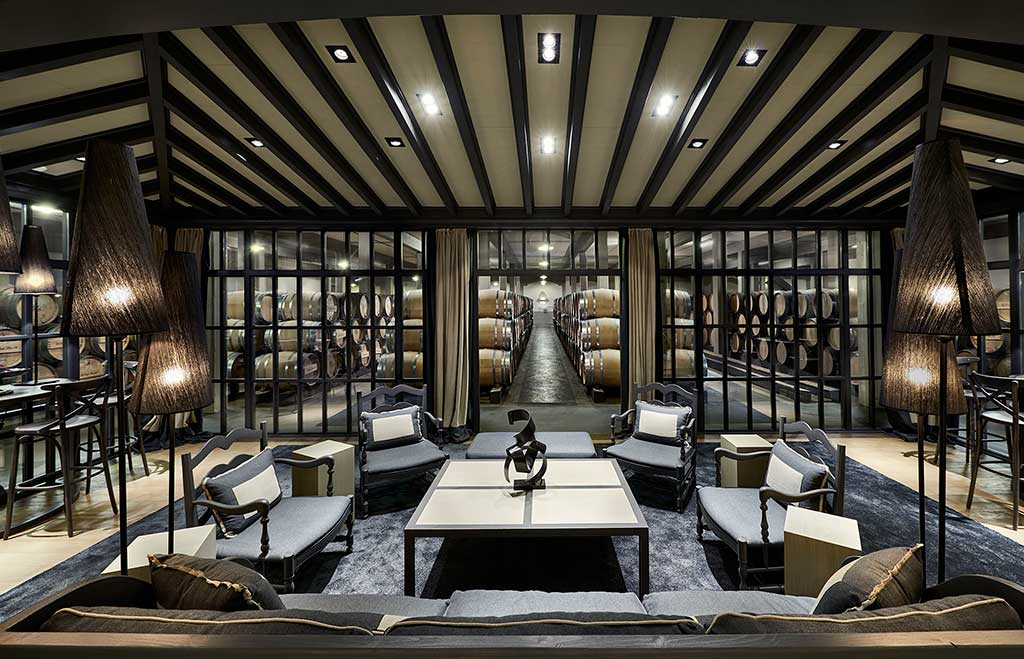
It was founded in 1890 by five Basque and Riojan vine growers and is one of the few wineries that withstood the urge to launch a modern style brand in the last two decades of the 20th century.
Its main concerns, in those days, were rather to gather a sizeable number of its own vineyards (453 hectares), build modern production facilities (located in the nearby village of Labastida), update barrel stocks, and install a cooperage in the winery, given the decisive role that American oak plays in the long aging periods in barrel.
One of its most iconic and renowned wines, the brand of which was registered in 1942, is Viña Ardanza – a blend of 80% Tempranilllo grapes (grown in the Rioja Alta villages of Fuenmayor and Cenicero) and 20% Garnacha grapes (from Tudelilla, in Rioja Baja).
Today La Rioja Alta is an important winery group that has grown tremendously, so much so that it has acquired the Torre de Oña Winery in Rioja Alavesa, Lagar de Cervera in Rías Baixas, and Bodegas Áster in Ribera del Duero.
Travelers will revel in the winery’s beautiful setting and deep sense of history and all wine lovers who visit the winery will delight in the well-stocked shop and bar offering wines by the glass.
Sources:
https://www.spanishwinelover.com/49-winerie-la-rioja-alta
https://www.riojalta.com/en/
Vivanco Winery is located in Briones, in the La Rioja wine country of Northern Spain.
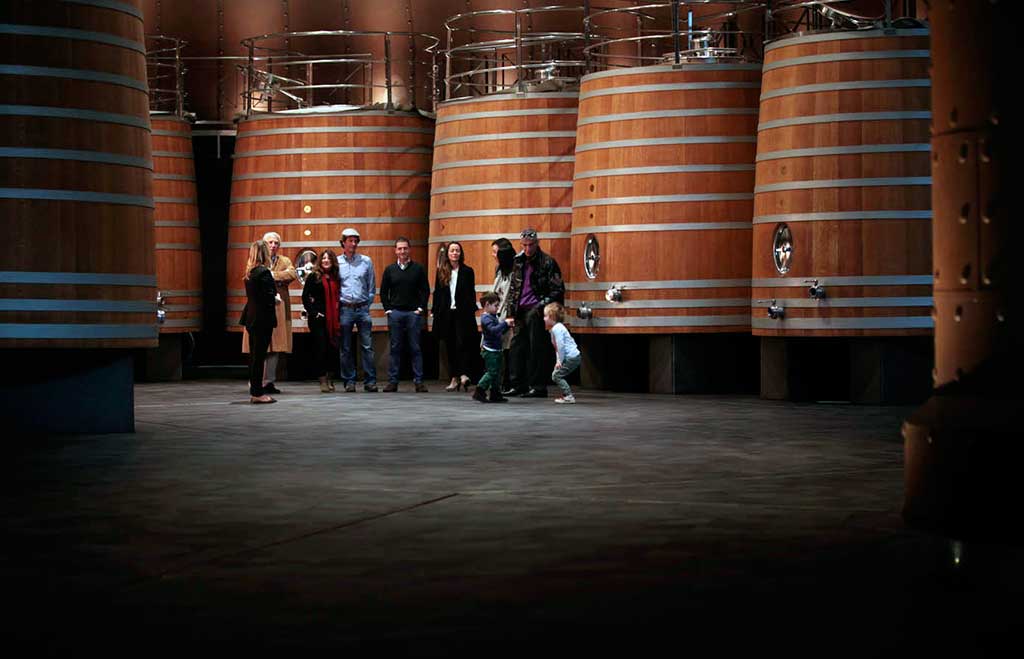
Being situated on the foothills of the Sierra de Cantabria and alongside the banks of the River Ebro gives the area its mild microclimate and extraordinary chalky, clay soil.
The Tempranillo grape is the primary variety grown, but the vineyard also grows other grape varieties that are used in their wines, such as the Graciano, Garnacha, Mazuelo, Viura, and Malvasía.
The underground winery is both functional and aesthetically pleasing. It was built underground in order to prioritize the vineyard’s surface area, as well as to minimize the environmental impact and preserve the landscape. Being underground also has the added advantage of achieving just the right temperature and moisture needed for properly preserving and ageing the wine in oak barrels or vats.
The vitivinicultural and pioneering spirit of winemaker Rafael Vivanco is reflected both in his wines and in the experiments and research he carries out with different growing and winemaking methods. Thanks to his personal winemaking vision, Vivanco Winery has received numerous awards, both for the quality of its wines and for bringing together modern, innovative methods with more traditional techniques in the winemaking process.
Source:
https://vivancoculturadevino.es/en/winery/
https://vivancoculturadevino.es/es/
The Luis Cañas Winery is located in the heart of the Rioja Alavesa – undoubtedly one of the best vine-growing areas in the world.
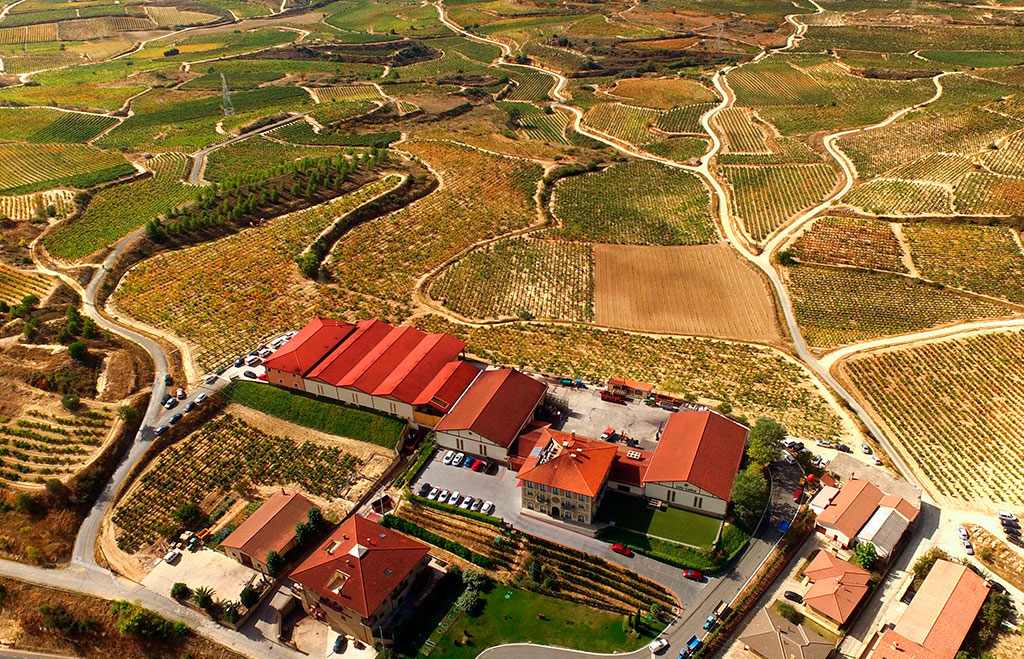
It was founded in 1928 but it was only from 1970 that they started marketing their wines.
The 450 hectares of estate-owned vineyards are made up of over 1000 small but very mature plots situated in ideal conditions (having chalky, clay soil and an ideal microclimate and exposure to the sun). As a result of these conditions, the Luis Cañas vineyards obtain low yields, small clusters and berries of excellent quality.
For more than a century the Cañas family produced and sold traditional young wines made by the carbonic maceration winemaking technique, using the Cueva de los Curas (the Priests’ Cavern – an ancient cellar carved out of the ground) to create an oxygen-free environment.
In 1994 they inaugurated a new, modern cellar, equipped with the best winemaking facilities. Since then, the Luís Cañas Winery has made constant improvements and extensions to their plant in order to continue to improve upon the quality of their wines.
Their winemaker, Juan Luis, is one of the most innovative winemakers in the country. Their wines have been recognized and awarded all over the world, most notably when their “Reserva Especial de la Familia 2006” won the prize for best wine in the world in the Decanter World Wine Awards.
Sources:
https://tourism.euskadi.eus/en/restaurants/bodegas-luis-canas-winery-rioja-alavesa-wine/aa30-12375/en/
https://www.luiscanas.com/bodega
The wines of Castile and León: D.O. Ribera del Duero and D.O. Rueda
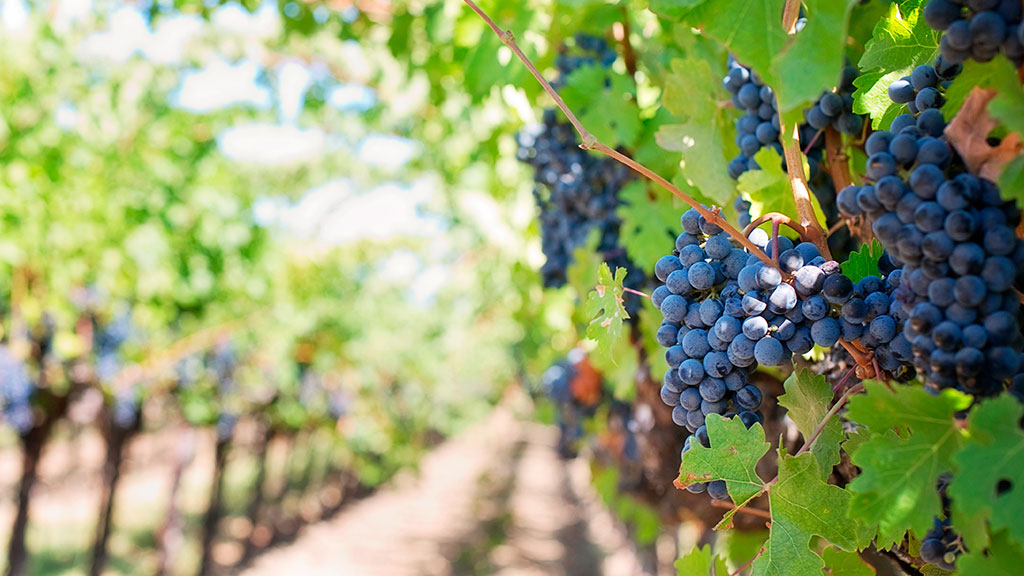
D.O. Ribera del Duero
Ribera del Duero is a Spanish Denominación de Origen Protegida (DOP) located on the northern plateau of the Iberian Peninsula, within the autonomous community of Castile and León.
As its name suggests, the region follows the course of the Duero River and the vineyards occupy around 120 km². It is characterized by largely flat, rocky terrain, and the climate is continental and Mediterranean, with more than 2 400 hours of annual sunlight.
The wine region is centered around the town of Aranda de Duero, although the most famous vineyards surround Peñafiel and Roa de Duero, where the regional regulatory council for the DOP is based. Ribera del Duero was named Wine Region of the Year 2012 by the prestigious Wine Enthusiast magazine.
Wine has been produced in the region for over 2 000 years, as evidenced by the 66-meter mosaic of Bacchus (the god of wine) that was unearthed at Baños de Valdearados. Viticulture as we know it, however, likely arrived in the Ribera del Duero region with the Benedictine monks from Cluny in the 12th century.
The Designation of Origin (D.O.) of Ribera del Duero was founded in July 1982 by an organization of wine producers and growers who were determined to promote the quality of their wines and enforce regulatory standards. At the time, there were only 9 wineries and 15 000 acres of vineyards. Today, however, Ribera del Duero proudly hosts 270 wineries and 55 000 acres of vineyards.
D.O. Rueda
Rueda is a Spanish Denominación de Origen Protegida (DOP) for wines located in the autonomous community of Castile and León. It is one of Spain’s leading wine regions and is known primarily for its white wines made with the Verdejo grape.
The first documented evidence of wine production in this area dates back to the 11th century, when King Alfonso VI offered land titles to settlers in the recently reconquered area. Many individuals and monastic orders accepted the offer and founded monasteries with their own vineyards.
During the 18th century the land planted with vines was greater in extent than it is now, and it was exclusively planted with the Verdejo grape variety. The wines produced enjoyed great commercial success, in part due to the clarification process used which involved the use of local clay.
In the years between 1890 and 1922, however, the phylloxera louse destroyed over two thirds of the vines, which were replanted by grafting onto new louse-resistant rootstock. The new varieties were selected according to productivity criteria rather than quality ones, however, and for many years the wine produced was sold in bulk.
The idea of creating a Designation of Origin (D.O.) was first raised in 1935 but it was not until 1972 that major investment by the well-known Rioja winery, Marqués de Riscal, signaled the start of a second era of quality wine production, again based on the Verdejo variety. Official D.O. status was acquired in 1980.
Today the D.O. encompasses an area of around 16 000 hectares and is centered around the town of Rueda, in the province of Valladolid (about 170 km northwest of Madrid). The land is a flat, high plain at an altitude of between 600 and 780 m above sea level. The Duero River flows through the area from east to west. Close to the River Duero the soil is alluvial with a high lime content. To the south, the topsoil is brown and sandy with a gravel and clay subsoil. Drainage is good, has a rich iron content and is easy to plough.
All in all, there are 32 500 acres of vineyards in Rueda, of which 28 800 acres are Verdejo. The area boasts 69 wineries and is cultivated by over 1 500 growers.
Sources:
https://en.wikipedia.org/wiki/Ribera_del_Duero
https://en.wikipedia.org/wiki/Rueda_(DO)
Located in Sardón de Duero, alongside the Ribera del Duero’s boundaries, the former monastery of Santa María de Retuerta (now Hotel Abadía Retuerta LeDomaine) is a renowned historical estate in the region, boasting a beautiful abbey that tells tales of its old winemaking traditions.
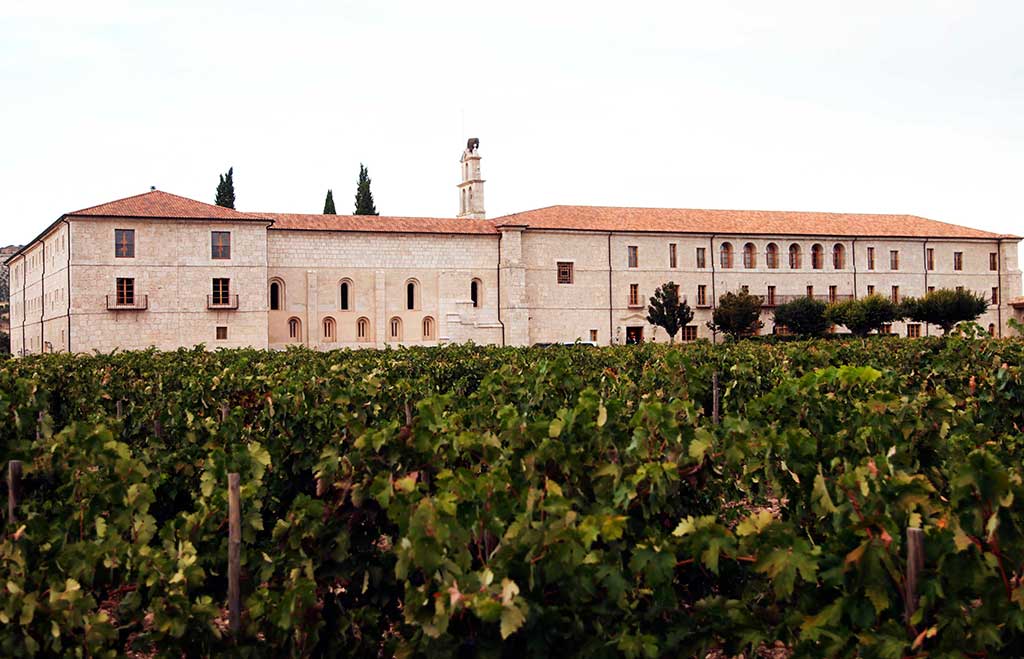
Those traditions had long ago faded away and even disappeared, but in 1996 the financial support of the pharmaceutical group Novartis helped to launch an ambitious project to get 210 hectares in the 700-hectare estate under vine.
French winemaker, Pascal Debeck, supervised plantings and production of the first vintages and continues to work for Abadía Retuerta as a consultant. However, the day-to-day work has long been in the hands of Ángel Anocíbar, who has skillfully returned the estate to its old winemaking glory.
Although Tempranillo is the dominant grape variety, French varieties such as Cabernet Sauvignon, Merlot, Syrah and Petit Verdot are also meticulously planted in the slopes beneath the Douro river.
The abbey has been completely restored and today houses a 12th century Romanesque church and the luxurious five-star Hotel Abadía Retuerta LeDomaine. It belongs to the Relais & Châteaux network and hosts a Michelin-starred restaurant.
Sources:
https://www.spanishwinelover.com/45-winerie-abadia-retuerta
https://www.abadia-retuerta.com/en/
The Pago de Carraovejas Winery occupies more than 26 000 m2 of built space around beautiful plazas that flank the building, providing incomparable views from the south-east to the valley and the Peñafiel Castle.
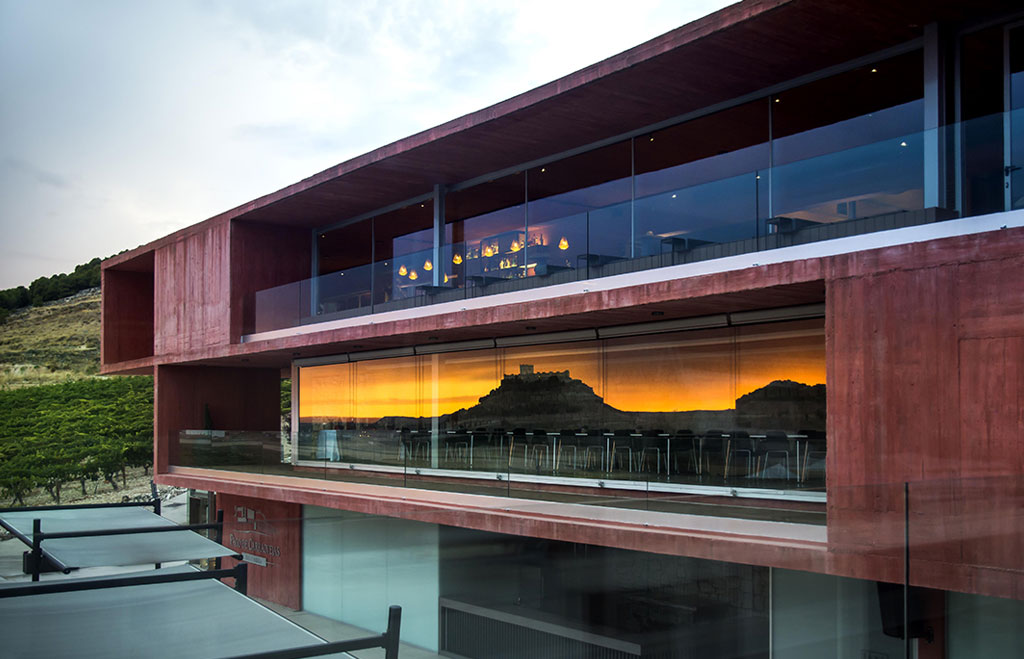
The Pago de Carraovejas Winery occupies more than 26 000 m2 of built space around beautiful plazas that flank the building, providing incomparable views from the south-east to the valley and the Peñafiel Castle.
A well-known producer in Ribera del Duero D.O., Pago de Carraovejas is restaurateur José María Ruiz’s dream come true. In the late 1980s, not long after he opened the famous restaurant bearing his name in Segovia, Ruiz bought 9 hectares of vines in Peñafiel (Valladolid). The vineyards extend across a south-facing slope with fabulous views of the ancient castle that crowns the village in the Botijas Valley. The first vintage reached the market in 1991, in the midst of Ribera’s boom, and quickly became one of the region’s most sought-after reds.
The property expanded across the slope over the following years to reach 120 hectares. Their grapes are from three varieties (Tempranillo, Cabernet Sauvignon and Merlot) and soil specialist, Vicente Gómez, and viticulture professor, Ramón Lisarrague, helped with their expertise in terms of wine growing.
Pedro Ruiz Aragoneses, José María’s son, took over in 2007 and brought more consultants to the team. With the new generation, new winemaking vessels have been introduced, such as stainless steel and large oak vats and wood and concrete egg-shaped fermentation vessels. The devil is in the details, as they say, and Pedro Ruiz is using everything in his power to set his wines apart from the rest.
Sources:
https://www.spanishwinelover.com/239-winerie-pago-de-carraovejas
https://www.pagodecarraovejas.com/en/
Bodegas Portia, situated in the heart of Ribera del Duero, spans 160 hectares in the area of Roa, Gumiel de Izán, Villanueva and Gumiel del Mercado.
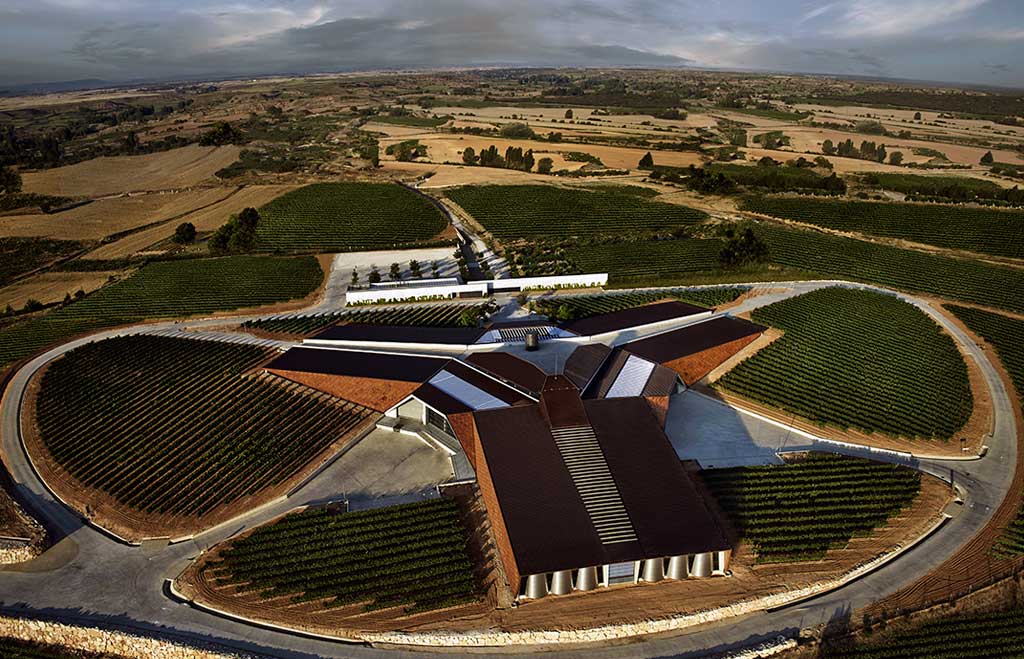
Bodegas Portia, situated in the heart of Ribera del Duero, spans 160 hectares in the area of Roa, Gumiel de Izán, Villanueva and Gumiel del Mercado.
The land gives Bodegas Portia’s wines their temperament and personality, as well as intense flavor profile and violet hues, particularly their exceptional vineyard, Finca La Encina, in Gumiel del Mercado – the ‘Golden Triangle’ of the Ribera del Duero. Finca La Encina is situated on a hillside in a perfect north-south arrangement, at a height of over 850 meters, and is devoted exclusively to the Tempranillo variety.
Bodegas Portia is the most iconic winery in Ribera del Duero, a perfect link between winemaking and architecture. The winery building itself was designed by the prestigious architectural studio Foster & Partners. It’s a spectacular architectural project that presents a three-pointed star in the heart of Ribera del Duero – a strong symbol of modernity and the future that has become an architectural icon in the world of wine.
The building, made of steel, wood, concrete and glass, beautifully combines the balance of materials and form, of architecture and landscape, of earth and sky. It provides the ideal place in which to create unique and different wines, where they work with a balanced technical and artistic flair.
Sources:
https://www.bodegasportia.com/en/architecture
https://www.bodegasportia.com/en/inicio
The winemaking tradition of the Finca Torremilanos Winery dates back to 1903, when Calixto Seijas Ruiz Zorrilla first inherited the land and planted the first vines.
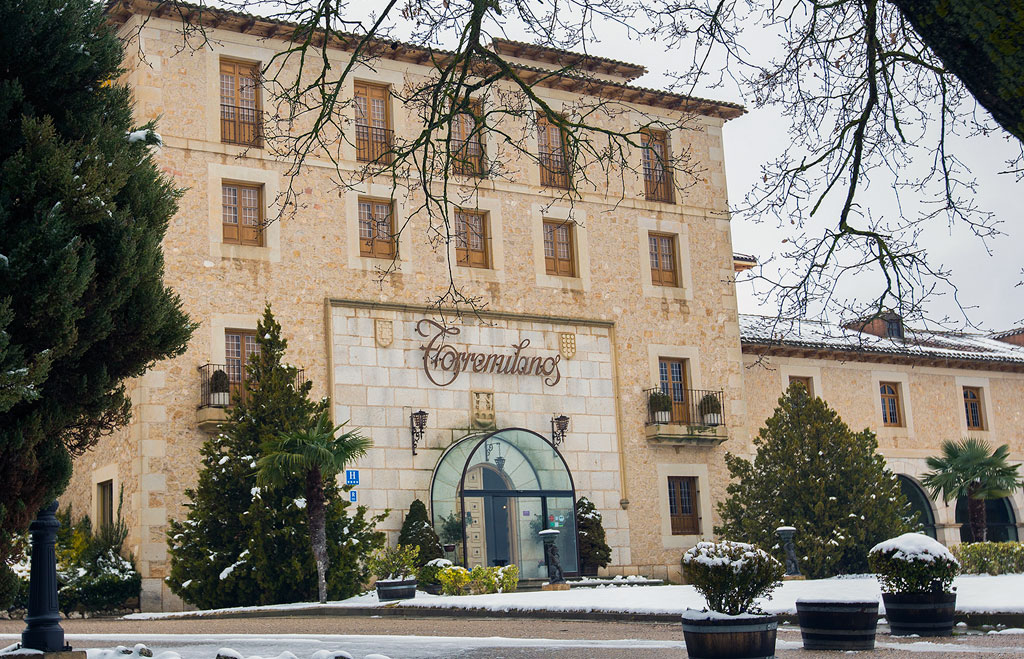
Later, in 1975, the Peñalba Lopez family, pioneers in the Ribera del Duero D.O., acquired the estate.Convinced of the quality of their Tempranillo grapes, and experts in the art of viticulture, Pablo Peñalba increased the vineyards until reaching the 200 hectares that the family still owns today. All of them are located in the mountains close to the winery and are cared for following a philosophy of respect for the environment. The wines from the Finca Torremilanos Winery are all certified as organic.
The quality of the grapes, the soil, the climate, and the special conditions of the winery ensure optimal aging and the quality of their wines.
Source:
https://www.torremilanos.com/en/history-and-philosophy-of-torremilanos/
Construction on Peñafiel Castle commenced in the 10th century, although the contemporary structure underwent major interventions during the 14th and 15th centuries.
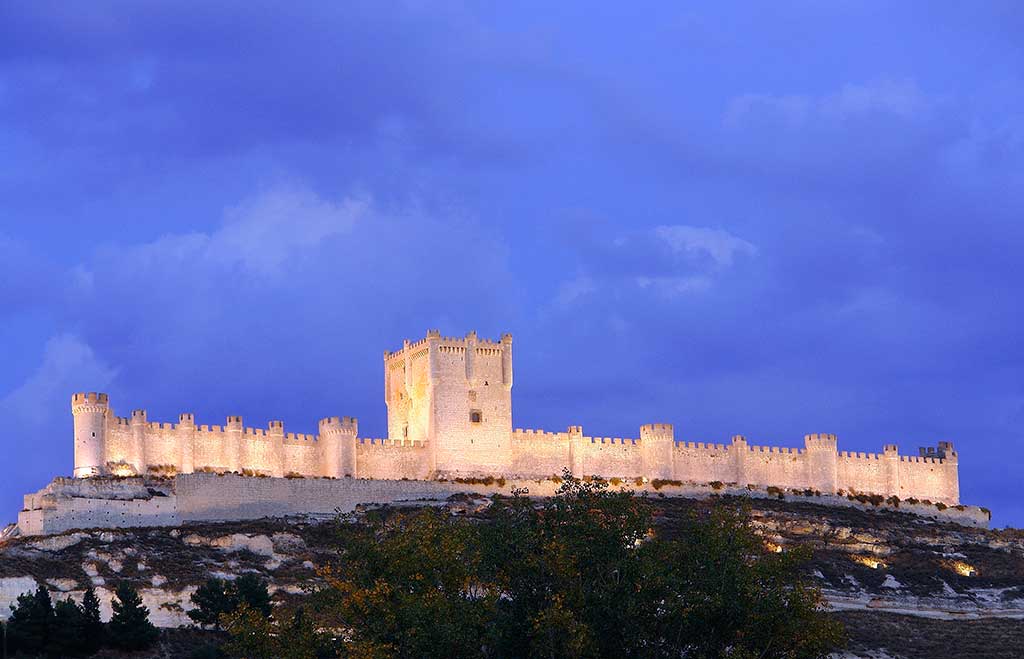
This medieval fortress was declared a National Monument in 1917 and currently stands as a veritable emblem of wine tourism in Ribera del Duero.
Peñafiel and its castle were key defensive locations along the Duero River, both for Christians and Muslims in the 9th and 10th centuries. Sitting atop the hill, the castle controlled the valleys of the Duero, Duratón and Botijas Rivers, and protected the population.
The Provincial Wine Museum, located in the Peñafiel Castle, is one of the most visited museums in the autonomous region of Castile and León and its success is divided between its beauty and the cultural value of both the content and the building itself. Many have positioned this fortress as a ‘place of pilgrimage’ for lovers of cultural and wine tourism.
A visit to the Provincial Wine Museum introduces tourists to the history and culture of wine, revealing the production techniques used to make some of the most famous wines in the world. The tasting room offers guided tastings of several Ribera del Duero D.O. wines, as well as tasting courses and professional tastings.
Source:
http://www.penafiel.es/turismo/recurso.php?m=3&nv=0&id=208&lang=en
The Pagos del Rey Winery in Morales de Toro, Zamora, is one of many wineries owned by the Solís family, who have dedicated their lives to their greatest passion — making and selling wine.
Note: it includes DO Ribera del Duero, Rioja, Rueda, and Toro.
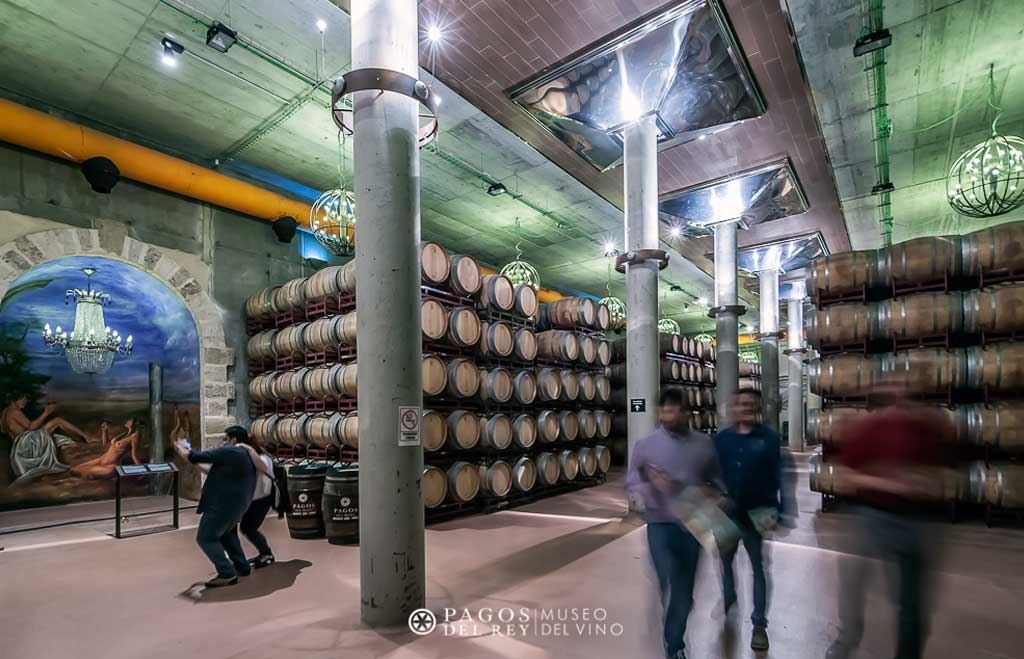
The Félix Solís Avantis group owns wineries in the Valdepeñas and La Mancha Designations of Origin under the Félix Solís brand, and in Rueda, Ribera del Duero, Rioja and Toro, under the Pagos del Rey brand.
Attached to the winery is the Pagos del Rey Wine Museum, which was opened in 2014. The museum is charmingly located in the facilities of the old winery, where parts of the building and 28 original wine-making tanks have been preserved.
It offers a fascinating and comprehensive introduction to Spain’s prestigious winemaking regions and the excellent and renowned wines produced by its vineyards. Visitors learning about the history of wine, from ancient times straight through to the present day, can browse interactive audiovisual exhibits housed within a 1 000 m2 indoor area. Furthermore, there’s an additional 2000 m² of outdoor gardens where the larger parts are showcased in an original exhibition area.
Uncover the journey of the grape, from the vine to the glass, through new technologies, and delight at the scenic views of the barrel room before finishing your visit at the store, where the friendly museum staff will ensure that you get a proper taste of the local Toro wine, accompanied by the best cheese from Zamora.
Sources:
https://www.lonelyplanet.com/spain/toro/activities/self-guided-visit-to-pagos-del-rey-wine-museum/a/pa-act/v-67440P1/1315739
http://www.pagosdelreymuseodelvino.com/
The Yllera family, 6th generation vine growers and wine producers, together with Ramón Martinez, an oenologist from La Rioja, are the owners of Grupo Yllera.
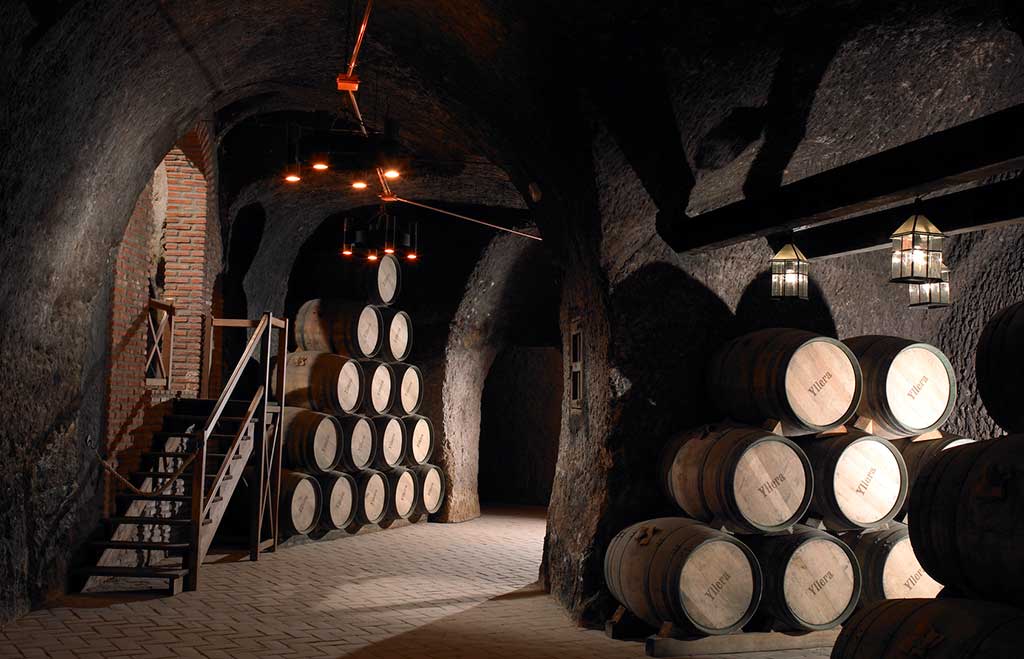
Despite having more than 100 hectares of their own vineyards in the most exclusive viticulture area in Spain, Grupo Yllera buys grapes from various other wineries in order to complete all of their production. They have long-term contracts with these wineries and retain exclusive control over the vineyards:
- The winery located in the D.O. Ribera del Duero in Boada de Roa (Burgos), used since 1986 for their magnificent, elegant and sophisticated red wines. The Bracamonte and Viña de Val are good examples.
- A modern winery in Rueda where the famous Tinto Yllera is made. The white wine, Viña Cantosán, the first modern style “verdejo” of the appellation D.O. Rueda, is also made in this high-tech winery.
- The third winery is probably the most striking one. It is a monumental building over an underground Mudéjar-style cellar which dates from the XIV Century. Roughly one kilometer of tunnels and corridors, more than 20 meters deep, are used for storing the sparkling wines and reserve bottles and as an original and spectacular dining room.
Grupo Yllera make more than 20 different wines. Their main labels are:
- Yllera (Vino de la Tierra de Castilla y León)
- Bracamonte (D.O. Ribera del Duero)
- Cantosan (D.O. Rueda)
- Garcilaso (D.O. Toro)
- Coelus (D.O. Rioja)
Their continuous and large investments in technology, oak barrels and their exhaustive and careful grape selection, have secured Grupo Yllera’s standing as a leading wine brand in both domestic and export markets, with new projects in different wine areas such as Toro, Rioja and even Mendoza, in Argentina.
Sources:
https://www.grupoyllera.com/empresa/nuestras-vinas/
https://www.vintagespain.com/winetourism/yllera.htm


